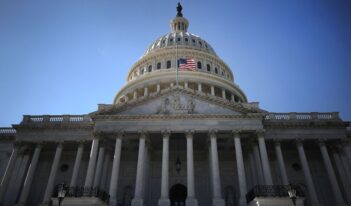
How defining green growth will create better environmental policy.
In the face of a stalled international process on climate change, domestic action has taken center stage. President Obama’s 2014 State of the Union reiteration of his intention to use his executive powers to reduce greenhouse gas emissions is just a sign of the broader trend of individual countries moving forward with plans to reduce emissions as the world waits for a global agreement.
Although the President didn’t mention “green growth” in his speech, that phrase has gained increasing currency in global environmental discourse. As international institutions, domestic leaders, and business firms have struggled to describe how they plan to balance economic priorities and environmental protection, “green growth” has become something of go-to phrase. Who could object to economic growth that is also green?
The phrase has been popping up across the globe in both the public and private sectors. The OECD has an extensive section on its website dedicated to green growth that includes key documents, evaluation tools, and an indicators database. The World Bank, the World Economic Forum, and the Clinton Global Initiative all address the topic, while McKinsey & Company advises its corporate clients specifically on green growth strategies.
The problem, of course, is that if green growth is nothing more than a convenient catch phrase, it can’t do much to inform or structure policymaking. As it is currently used, green growth lacks any clear content, and it is too often used to describe ideas that are hopelessly muddled or support claims that are empirically dubious. In a recent journal article, I try to sort through the morass and arrive at a clear, attractive, and operational conception of green growth as a normative goal.
One of the defining features of green growth discourse is a set of claims about the compatibility of environmental policy and economic growth. The descriptive hypotheses associated with green growth—that environmental investment can serve to boost the economy or help job creation, or that environmental quality goals can be achieved at zero or negative costs—are controversial. If green growth is understood as embodying these descriptive claims, it runs the risk of simply being erroneous.
There is an alternative to understanding green growth as an empirical account. Instead, we can think of green growth as a normative goal for societies to try to achieve. This approach eliminates the risk that green growth will embody no more than an environmental Pollyannaism that denies the harsh reality of tradeoffs. But, such an understanding requires that the concept be defined in a clear manner that doesn’t simply replicate existing normative accounts of desirable environmental policy.
Looking at past usages of the phrase “green growth” in their best possible light, I propose that we define green growth to refer to policies that achieve social goals concerning economic growth or environmental quality with the least possible sacrifice to the other social goods. In essence, this definition means that green growth requires that environmental goals be achieved in a cost-effective manner, and that economic goals be achieved in an environmentally effective manner. The green growth frontier defines the set of policies that meet these criteria, and the green growth agenda counsels policymakers to move toward that frontier.
This proposed definition is distinct from the two most prominent normative frameworks for understanding environmental policy: sustainable development and cost-benefit analysis. Sustainable development (which is often conflated with green growth) makes demands about how resources should be allocated between current and future generations; green growth makes no such demands. Cost-benefit analysis requires that economic net benefits (including health benefits, ecosystem services, etc.) be maximized. Green growth only requires that, however we set environmental or economic goals, they be achieved in ways that minimize sacrifice. Unlike sustainable development and cost-benefit analysis, green growth does not decide what goals we ought to aim for. It just asks that we not shoot ourselves in the foot while trying to hit them.
So understood, green growth might seem like an incredibly uncontroversial goal, but there are certainly instances in recent U.S. environmental history that show how even the uncontroversial can be deeply contested.
For instance, in 2011, the EPA proposed a rule to address air pollution that travels between states, known as the Cross State Air Pollution Rule (CSAPR). The proposed rule relied on market mechanisms, giving industry wide flexibility to achieve low-cost reduction in air pollution. The largest category of benefits was the saving of human lives by reducing particulate matter exposure. The agency estimated annual benefits at between $110 billion and more than $280 billion, with costs of under $1 billion. The rule was heavily justified on cost-benefit grounds, and seemed to promote green growth by achieving environmental benefits without compromising broad economic goals.
Yet opposition was stiff. Regulated industry expected to face costs that could have required reallocating capital and displacing workers. Even though, on net, the rule did not sacrifice economic goals, the affected parties were unwilling to accept the distributional consequences without a fight. In the end, the D.C. Circuit court held that EPA overstepped its authority under the Clean Air Act. The Supreme Court is now reviewing the case.
Another example of green growth opposition—this one more purely ideological—came during the 2011 budget negotiations between President Obama and the Republican House of Representatives. The House successfully inserted a provision into the final budget to suspend a 2007 law that aimed to encourage more energy-efficient lighting. Representative Michael Burgess was quoted at the time as saying, “When the American people gave Republicans control of the House in January, one of the major issues involved was the Democratic ban on the 100 watt bulb.” Opposition to this green growth policy, which would have generated environmental benefits and net savings for consumers, is hard to fathom except as a purely ideological exercise: the 2007 law in question was, in fact, signed by Republican president George W. Bush.
Both examples are illustrative case studies of how intransigent opposition can slow or even derail green growth policies. Governments face all kinds of incentives to adopt wasteful policies that aren’t environmentally or cost-effective, from ideological pressures to interest group capture. Even if green growth seems like a straightforward goal, it is one that many governments fail to live up to.
Ultimately, if green growth is going to be used, it might as well mean something. No public value is served by the introduction of a feel-good catch phrase that is meant to placate environmental and economic concerns without constraining policymaking. By adopting a clear and meaningful definition of green growth, citizens can stop letting their leaders get away with vague hand-waving in the direction of sound economic and environmental policy, and hold them accountable for what they actually deliver instead.




